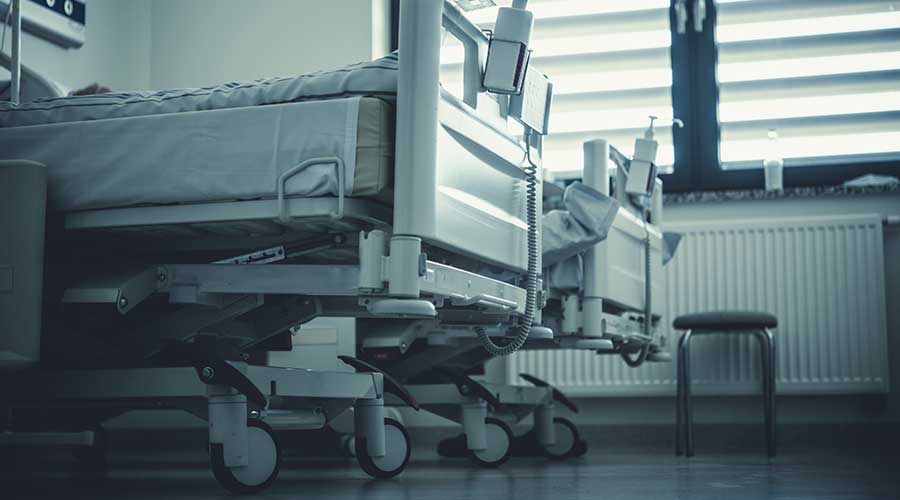When you are admitted to a hospital or other healthcare facility, the end goal is that you leave healthier than when you first arrived. The materials that are used in healthcare facilities play a large role in the care that patients receive as they can help with infection prevention. Healthcare Facilities Today recently spoke with Cheryl Lauren Spigler, director, senior design leader for Nelson Worldwide, on how materials are selected to best provide care to patients.
HFT: How do you choose materials for surfaces and finishes to ensure they are easy to clean and resistant to bacterial growth?
Cheryl Lauren Spigler: Working with manufacturers’ representatives, identify materials that have been tested for staining, cracking, wearing, sun exposure, and cleaning chemicals. This insight tells us if a material is appropriate for use. Get creative–I have successfully used carved solid surface with back lighting by placing the smooth side as the front face and backlighting the carved side to create interest and texture. For artwork or other features, consider putting them behind glass or plexiglass so they can be easily wiped down. There are plenty of easy to clean substrates on the market such as wall protection, resin, and type II PVC Free vinyl wallcoverings that can easily be cleaned and customized to fit any design aesthetic.
- Technology: Explore options for integrating technology that can enhance cleanliness and functionality. For example, touchless controls for doors and lighting can reduce the need for physical contact, and digital information panels can provide updates and guidance without the need for physical signage.
- Maintenance Protocols: Establish clear maintenance protocols for all surfaces and materials used. Provide training for cleaning staff on the proper techniques and products to use, ensuring that the integrity of the materials is maintained over time.
- Feedback Mechanism: Implement a feedback mechanism for patients, staff, and visitors to report any issues with materials or cleanliness. This can help you address potential problems quickly and maintain a high standard of care.
- Design Flexibility: Ensure that the design allows for flexibility and adaptability. High-traffic areas may need periodic updates or changes, so design elements should be easy to update or replace as needed.
Related: Infection Prevention for 'Near Patient' Surfaces
HFT: How do you integrate technology into your design to assist with infection control, such as automated disinfection systems or touchless interfaces?
Spigler: Leveraging technology to enhance patient and visitor experiences while minimizing touchpoints is a forward-thinking approach that aligns well with modern healthcare design principles. Here are some additional strategies and considerations for integrating technology in healthcare environments to improve functionality and hygiene:
- Digital Check-In and Navigation
- Mobile Applications: Develop or integrate mobile applications that allow patients and visitors to check in, schedule appointments, and access real-time updates. Ensure these applications are user-friendly and provide clear instructions.
- Wayfinding: Implement digital wayfinding solutions that use beacons, QR codes, or interactive maps. These can guide users through the facility using their smartphones, reducing the need for physical signage and minimizing contact with information kiosks.
- Personal Device Integration: Offer ways for patients and visitors to use their own devices to interact with hospital systems, such as checking in via a mobile app or using personal devices for virtual consultations.
- Touchless Technology
- Automated Doors: Install touchless automatic doors that open via motion sensors or card access systems. This reduces the need to touch handles or buttons, minimizing potential contamination points.
- Touchless Fixtures: Equip bathrooms with touchless faucets, soap dispensers, and hand dryers. These fixtures reduce the need for physical contact, improving hygiene and convenience.
- Lighting Controls: Use motion sensors or voice-activated controls for lighting. This allows users to adjust lighting without physical switches, which is particularly beneficial in high-traffic areas. By incorporating these technological solutions, you can create a healthcare environment that enhances patient and visitor experiences while also addressing concerns about hygiene and touchpoints. This approach not only improves efficiency but also aligns with the growing demand for digital interaction and contactless solutions in healthcare settings.
Mackenna Moralez is the associate editor for the facilities market.

 Code Compliance Isn't Enough for Healthcare Resilience
Code Compliance Isn't Enough for Healthcare Resilience Ribbon Cutting Marks First Phase Completion for New Montefiore Einstein Facility
Ribbon Cutting Marks First Phase Completion for New Montefiore Einstein Facility Brooks Rehabilitation Launches 3 New Major Construction Projects
Brooks Rehabilitation Launches 3 New Major Construction Projects Joint Commission Standards: What Updates Matter Most?
Joint Commission Standards: What Updates Matter Most? Swinerton Completes Construction at Atlanta's Grady Hospital
Swinerton Completes Construction at Atlanta's Grady Hospital